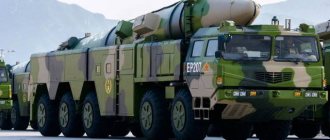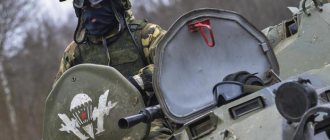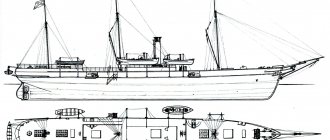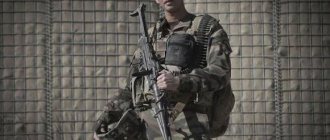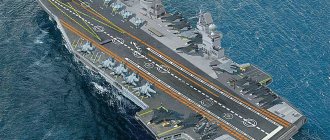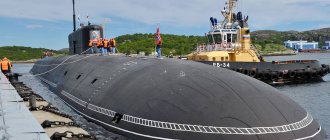To simplify, Schlieffen's war plan can be briefly summarized as Germany must destroy France in 42 days, and then focus on Russia. 42 days is not a random number. The German General Staff was convinced that this was the time the Russian Empire would need to mobilize and prepare for war. Thus, Germany was confident that during the first 42 days after the start of the war, Russia would not take active military action. Germany must destroy France during this time, using a flank attack through the territory of Belgium and Luxembourg to bypass the French defensive Maginot Line.
The creators of the plan and its essence
The Schlieffen Plan was developed by the Chief of the General Staff of the German Empire.
Rice. 1. Schlieffen plan.
This position was held by the elderly Alfred von Schlieffen from 1891 to 1905. He was born in 1833 and in 1866-1871 took part in the wars with Austria and France.
According to the plan, Germany's only ally was Austria-Hungary. Italy, despite participating in the Triple Alliance, was not considered as such and had the weakest army. In fact, by July 1914, that is, by the beginning of the First World War, the alliance turned out to be ambivalent.
In 1905, Schlieffen was replaced as Chief of the General Staff of the German Empire by Helmuth von Moltke. He held this position until September 1914 and resigned due to defeats on the Western Front. Mohlke worked on finalizing the Schlieffen plan.
The essence of the plan was that France must first be defeated with a powerful blow through neutral Belgium. This was made possible by the experience of the war of 1870-1871, as well as the slow pace of mobilization of the Russian army. The Germans planned about 40 days to defeat France.
Rice. 2. 1914 Western Front.
The Great War: The Schlieffen Plan
Not only the Russian and French, but also the German strategy had significant flaws. The German Empire opposed Russia and its Western allies with the Schlieffen Plan. Count Alfred von Schlieffen was Chief of the General Staff from 1891 to 1906, a fanatically dedicated professional, who participated in the Austro-Prussian War of 1866 and the Franco-Prussian War of 1870-1871. Schlieffen Plan
Based on the experience of wars in the 19th century, German theorists aimed the army at victory in one general battle. Having planned to throw all their forces into battle at once and win, the Germans underestimated the role of strategic reserves.
Schlieffen developed the theory of encircling and destroying the enemy through crushing blows on his flanks (or one of them) followed by a move to the rear. The operational idea of the Schlieffen plan finally crystallized in 1905. The essence of the plan was to decide the outcome of the entire war with one strategic offensive operation (general battle). They planned to envelop the enemy army, in this case France, from the right flank, squeeze it into a “bag” and destroy it. Deprived of an army, France was forced to capitulate. The main blow was delivered through the territory of Belgium. Due to natural conditions, the French border was inconvenient for a massive invasion; a number of forested mountains and hills ran along it - the Ardennes, Argonne, Vosges. In addition, convenient passages were blocked by powerful fortresses, which could greatly slow down the invasion and generally bury the plan for a quick war. While the German troops were tinkering with the fortresses, the French could complete mobilization and launch a counteroffensive. Therefore, Schlieffen wanted to deliver the main blow through the plain of Flanders (Belgium).
The left wing at this time was supposed to pin down the enemy in battle. It was noted that if the left wing of the German army, under pressure from the advancing forces of the French army, which planned to deliver the main blow in the center of the front, retreats, then this will even be beneficial in order to more successfully envelop the enemy. The penetration of the French army into German territory will lead to even more catastrophic consequences for it, after the completion of the envelopment of the right flank. Schlieffen believed that the enemy would not get further than the Ardennes, a wooded and hilly area. And then the main forces will go to the rear of the French strike group and the result will be a huge “Cannes”, the French will be forced to capitulate.
In the east they planned to leave a slight barrier. The German command counted on the slow mobilization of the Russian army: in Germany it was planned to be completed in 10 days, but in Russia it then lasted 30 days. After the defeat of France, they were going to transfer troops to the Eastern Front, using the developed network of German railways. Kaiser Wilhelm II said: “We will have lunch in Paris and dinner in St. Petersburg.” On the Eastern Front they also dreamed of repeating “Cannes”: delivering converging attacks—the Germans from the north, and the Austrians from the south, from Krakow. Allied forces meet in the Warsaw area, encircling the Russian army in Poland. The defeat and surrender of the main forces of the Russian army should have led to the defeat of Russia. The result is complete victory in the West and East. And in the shortest possible time.
Schlieffen did not count on a strong alliance with Italy, although this country was part of the bloc of the Central Powers. In 1882, Germany, Austria-Hungary and Italy signed the secret Treaty of the Triple Alliance. In 1887 and 1891 the treaty was renewed, and was automatically extended in 1902 and 1912. However, there was little hope for a lasting alliance with Italy. Italy wanted significant territorial concessions from Austria-Hungary and already in 1902 entered into an agreement with France, pledging to remain neutral in the event of a German attack on France. This forced Schlieffen to abandon the idea of conducting two flank attacks, with the participation of the Italian army.
According to Schlieffen's theoretical calculations, it was necessary to deploy 35 army corps (70 infantry divisions) and 8 cavalry divisions against France; in the second echelon there were another 8 reserve corps (16 divisions). They united into 7 armies. German troops, with the Metz, Diedenhofen (Thionville) area as their axis of entry, had to deeply bypass the enemy’s left flank to Amiens or further west to Abbeville and even along the sea coast of France, covering Paris from the northwest. Corps of 5 armies (1-5) took part in the attack, one army held the right flank. The troops remaining in Alsace and Lorraine (about 4 1/2 corps - 10 infantry and 3 cavalry divisions) could retreat under enemy pressure to the line of Metz, Strasbourg and even to the Rhine. This drew the French armies into encirclement. The French troops planned to be destroyed approximately in the Alsace region or pressed towards Switzerland.
In total, Schlieffen planned to deploy 48 corps (96 infantry divisions) and 11 cavalry divisions against France. But that was in theory. In fact, by 1905 Germany had 62 infantry and 10 cavalry divisions. According to the 1905 plan, the ratio of forces north and south of Metz was 7:1. It was a risk. Thus, criticizing the balance of forces between the right and left flanks of the German army, Schlieffen’s student Ludendorff in his memoirs of Fr. The French army, with skillful leadership and a certain determination, could put the German army in a very difficult situation by intercepting the communications routes of the German wings.
In addition, the question arose about supplying the huge mass of troops on the right flank of the German army. So, already two weeks after the start of the offensive operation, the right wing began to feel a significant shortage of supplies, and this despite the fact that the army group was significantly weakened when the plan was improved by the new Chief of the General Staff, Helmuth von Moltke. In addition, Schlieffen assumed that German troops would reach the Franco-Belgian border by 30 days from the start of mobilization. But during this significant period of time, the French should have learned about the movement of huge masses of German troops on their left flank and, taking advantage of their powerful French railway network, regrouped their armies, depriving the enemy of their operational advantage.
Alfred von Schlieffen (1833 - 1913)
Moltke's changes
Despite the significant shortcomings of the Schlieffen plan, it was still retained, although significant changes were made to it. Helmuth Johann Ludwig von Moltke (Moltke the Younger), who in 1906 headed the Great General Staff of the German Empire, under pressure from disgruntled military leaders and Kaiser Wilhelm II, improved the Schlieffen Plan. Schlieffen's ideas were considered too risky, for fear of leaving too weak a group on the left flank of the Western Front.
The main idea of the main attack on the right flank through Belgium was retained. However, the left wing was significantly strengthened to the detriment of the strike force on the right flank. Moltke's deployment plan, with which the German Empire entered the war in 1914, was as follows. In the Metz area and north of it, they planned to deploy 26 1/2 corps, including reserve ones (and Schlieffen proposed deploying 35 and a half corps), almost all cavalry units and 17 landwehr brigades. This army group was supposed to bypass the left flank of the French armies with its right wing, advancing through Belgium, and provide its left wing with the fortified area of Metz and Didenhofen. There were 11 corps (400 thousand soldiers) in the German center; after taking Luxembourg, they covered the right flank of the main strike force. The main strike group - 16 corps (700 thousand people) was supposed to pass through Belgium, crushing two powerful fortresses of Liege and Namur along the way, cross the Meuse River, take Brussels on the 19th day of mobilization and cross the Belgian-French border on the 28th day. Then the troops were to advance to the west and south, reaching Paris from the north on the 39th day. Moltke promised the Austrians that on the 40th day the German command would begin transferring troops to the east in order to crush Russia together with the Austro-Hungarian army.
The left wing of the German army was significantly strengthened: 8 army corps were deployed in Alsace and Lorraine - 320 thousand people (according to the Schlieffen plan there were 4 and a half). As a result, the ratio of forces between the northern and southern groups became 3:1 (for Schlieffen it was 7:1). Although these troops were hardly capable of containing the bulk of the French troops. But this one was not required of them. Retreating, they had to lengthen the lines of communication of the French strike forces, complicate their interaction in mountainous and wooded areas, lure the largest possible number of French troops into an area that did not decide anything in the general course of the war, and then slam the trap.
Thus, there was a significant weakening of the right wing of the German army, a significant strengthening of the Alsace-Lorraine group. These were the most significant differences between the 1914 plan and the Schlieffen plan. In addition, if Schlieffen on the Eastern Front was going to limit himself to defense with the help of Landwehr formations, then Moltke the younger sent 3 field and 1 reserve corps to the Russian border, not counting reserve divisions, Landwehr and reinforced garrisons of fortresses.
Helmut Johann Ludwig von Moltke (1848 - 1916)
The main reasons that forced the German command to change the Schlieffen plan were the following:
1) the threat of a strong blow on the left flank and the general lack of forces did not allow a radical strengthening of the right wing of the German army. The German command did not take risks, since with an active offensive by the French army, the entire rear of the German armies was threatened, the French could intercept communications and disrupt the offensive on the right wing;
2) industrial circles feared severe destruction and devastation of the Alsace-Lorraine region, which had become very important in industrial terms. In 1905, when the Schlieffen plan was drawn up, it had not yet risen to the same height as in 1914. They wanted to save the area from destruction, so it could not be given to the enemy, as Schlieffen proposed;
3) under pressure from the Prussian Junkers (nobility), the high command decided to divert quite significant forces for the defense of East Prussia. The 8th Army under the command of General Maximilian von Prittwitz (200 thousand people) was deployed against the Russian Empire in East Prussia. Military considerations were sacrificed to the economic interests of the German Junkers;
4) an assessment of Germany’s transport capabilities to supply such a huge mass of troops, which Schlieffen intended to concentrate on the right flank, showed that during the offensive it would be impossible to provide it with everything necessary.
In addition to the objective lack of forces, one can see the great influence on the German command of the German industrial bourgeoisie, as well as the Junker landowners. The German military could not help but take into account the interests of the nobility and the big bourgeoisie. As a result, the German Empire entered the war in 1914 with high hopes of achieving its goals, but the Second Reich simply did not have enough strength and resources to achieve all its goals. In addition, the German military-political leadership underestimated the opponents, the forces and means of Russia, France and England, which concealed the prerequisites for the future defeat of the German Empire.
It should be noted that a number of researchers believe that when implementing the original Schlieffen plan, the German army had a chance of success. And the 1914 plan led to a dispersal of forces, which deprived the German army of any chance of success in the 1914 campaign. Other historians believe that Moltke’s “mistakes” were not the reasons for the failure of the German blitzkrieg. There were many objective reasons for the failure, including the technical unpreparedness of the armies of that time for such a rapid movement, the inability to calculate all factors, including the rapid and successful offensive of Russian troops in East Prussia. The German plan was smooth only on paper; it did not take into account many factors.
Source:: Kolenkovsky A. Maneuver period of the first world imperialist war of 1914
German plan on the Eastern Front
The commander of the 8th German Army, which was fielded against Russia, received “free hands” - he had to conduct operations in the east at his own discretion. In general, the 8th Army received the task of securing the eastern regions of the empire from the invasion of Russian troops and supporting the offensive planned by Austria-Hungary. They planned to support the Austro-Hungarian offensive from Silesia, for which the Landwehr Corps was assigned. In general, the German command believed that the best support for the Austro-Hungarian army would be the fact that the 8th Army would forge the largest possible force of Russian troops, diverting them from Galicia.
If the Russians launch an offensive against East Prussia, it will be carried out with such forces that the pressure on the Austro-Hungarian army will be seriously weakened. If the Russian army takes a wait-and-see or defensive position towards Germany, then the commander of the 8th Army must conduct offensive actions and coordinate its movement with the Austro-Hungarian command. As a result, the German command reserved complete freedom of action in any situation. The Austrian command had no guarantee that he would receive assistance in any case.
In accordance with these instructions received, the commander of the 8th German Army von Prittwitz, relying on the Masurian lake-marsh line, deployed one army corps with a front to the Narew, approximately from Mlawa to Wielenberg, a second front to the Neman - between Goldap and Gumbinen, the remaining two The corps were in the army reserve in the area of Angerburg, Allenstein, Marienburg. German troops were located near railway junctions to enable their rapid transfer in the desired direction. The Landwehr Corps was positioned in the direction from Silesia to Ivangorod, as if to communicate with the Austro-Hungarian army.
German army
The German soldier of the 1914 model opposing the Entente countries was well prepared. Dressed in a green and gray uniform, the German soldier carried 26 kg of cargo - a rifle, cartridges, grenades, a backpack, an entrenching tool, a bowler hat, a cleaver, food rations and a flask of schnapps. The officers also had binoculars and a tablet with maps. The head was protected by a pointed helmet, where the regiment number was indicated in red paint. Staff officers traveled in cars.
Foreign experts noted the perfection of technical equipment and the smooth functioning of the German military machine. Its strongest point was artillery, especially heavy artillery. The Germans, earlier than their opponents, appreciated the importance of howitzers, which fired shells of great destructive power along a hinged trajectory. Such guns caused enormous harm to enemy troops and penetrated most of the defensive structures. The division was armed with 24 machine guns and 72 guns, of which 12 were heavy. The corps artillery consisted of 16 heavy guns (caliber 150 mm). German heavy artillery numbered 575 guns in 1914, French - only 180, and Russian - 240 guns. In addition, the Germans took advantage of the French’s neglect of new factors in modern warfare: machine guns, heavy artillery, barbed wire, etc. Much of this was first seen by German observers in the first major war of the modern type—the Russian-Japanese war. Therefore, technically, the German army was significantly superior to the enemy armies.
However, there is no point in idealizing the German army either. It also had its drawbacks, and serious ones at that. Although the German command studied the experience of previous conflicts, it did not learn all possible lessons from it. Thus, the army’s tactics still lagged behind modern requirements. Not enough attention was paid to defense. During the offensive, they were going to attack, as in the past, at full height, without using all the factors of the terrain, in dense chains - at intervals of 2 steps, or even in dense columns. The archaic technique of stopping the chain after a certain number of steps was also preserved; the soldiers took aim, fired a volley and marched on. And all this under enemy fire. The cavalry was also prepared for attacks in close formation. All these elements led to great losses.
Implementation in practice in 1914
In August 1914, the German offensive on the Western Front began, at first glance, successfully. Through the territory of neutral Belgium they moved towards Paris from the north, from the side of the Marne River. However, on September 5-12 they were defeated at the Battle of the Marne. After this, there was no force to break through the front, but the allies (the British and the French) were unable to carry out a decisive offensive, so both sides switched to trench warfare in the fall of 1914.
A number of events also disrupted the implementation of the Schlieffen Plan in 1914: Italy’s refusal to fight on the side of Germany, the heroic resistance of the small Belgian army, the East Prussian operation of the Russian army and the Germans’ underestimation of the French’s ability to transport troops not only by rail, but by road.
Rice. 3. Schlieffen Alfred von.
Planning stages
The theoretical development of the Schlieffen plan began in 1892. The development of the plan was led by Alfred von Schlieffen, who had served as chief of the German general staff since 1891. Schlieffen was convinced that at the initial stage of the war on the German eastern front, the minimum necessary forces should be deployed against Russia to deter the enemy. As a result, by the time the First World War began, approximately 80% of the German army was concentrated on the western front against France, and only 20% on the eastern front against Russia.
As mentioned above, the Schlieffen Plan began to be developed in 1892, which means that more than 20 years passed from the development of the plan to its implementation. Therefore, the plan was changed several times. In particular, there are 3 main stages in changing this plan:
- Initially, Schlieffen envisioned a frontal attack on France with the main forces, and only secondary forces would try to outflank the enemy on both flanks. The problem was that France was strengthening the “defense is possible” line on the eastern border between France and Germany every month. Given this, and the fact that France had a numerical superiority over Germany, a frontal attack was very dangerous for Germany. Therefore, the Schlieffen plan was changed already at the stage of 1894-1898, when the idea first appeared that the direction of the main attack should pass along the right flank through the territory of southern Belgium and Luxembourg. This direction was chosen because it made it possible to bypass the French defense line, and also passed through terrain with a sufficient number of roads to ensure the speed of movement of the army.
- The second stage is characterized by Schlieffen's note of December 1905, which finally established the idea that Germany should simulate a frontal attack, and deliver the main blow on the right flank, going to the rear of the French, encircling them and destroying them. It was this plan and this idea that formed the basis for the formation of the German army and was implemented by the German command until the outbreak of the First World War.
- The final plan called for the encirclement and destruction of the French army. To do this, the right flank of the German army had to act even more decisively in order to reach Paris from the west and south, after which the encirclement had to close.
The Schlieffen plan assumed that since the French defense line was built along the line Verdun - Toul - Epinal - Belfort, then for a successful offensive the German army must advance north of Verdun to bypass the Maginot Line. It was assumed that the initial position of German troops would be on the Metz-Dusseldorf line. After this, the German army must reach the Dunkirk-Verdun line. From there, the troops must move around the French army, where the main role was assigned to the right flank and center. The left flank, relying on the fortified fortress of Metz, was supposed to hold a position in the Verdun area. The center group, having passed the Charleroi region of Belgium, was supposed to reach the Reims region. The right flank, moving between Dunkirk and Lille, was supposed to bypass Paris.
The entire success of the military operation depends on our left wing. The left flank of the French front, consisting of 3 field, 3 cavalry and 1 reserve corps, must withstand the fight against significantly superior enemy forces. At the same time, the left flank must conduct active attacks and counterattacks in order to pin down large French forces. Then the attack on the right flank will be most effective; it will be possible to encircle the French army and completely destroy it. It is necessary to force France through active actions to move towards the border with Switzerland, where a decisive defeat can be inflicted on the French.
von Schlieffen
In this phrase, Schlieffen very accurately described the main problem of his plan - for successful implementation it is necessary to fetter the main forces of France. Without this condition, the plan was very adventurous.
The main goals of creating the Schlieffen plan
Germany initially considered Russia and France (not England) as its main opponents in the upcoming war. France was considered a strong enemy by the German General Staff, despite the relatively easy victory over it in 1870. Therefore, it was obvious to the German military that a simultaneous war with Germany’s two main enemies was very dangerous for it.
There were other problems as well. In particular, the border territories of France made a hypothetical German offensive very inconvenient - the terrain there was mountainous.
In favor of Germany was the fact that in Russia, due to the insufficient development of the transport system and huge distances, the mobilization and movement of military units from the interior of the country to the borders took much longer than in Germany or France. Calculations of the German General Staff at the beginning of the twentieth century gave a difference of a whole month. Accordingly, during this month Russia could be considered incapable of full-fledged combat operations.
From the above it follows that Germany needed a campaign plan that would allow it to defeat and withdraw France from the war before Russia completed all mobilization activities. In this case, a continental war on two fronts could be avoided. And acting together with Austria-Hungary, Germany would have a good chance of success on the eastern front.
Reasons why the plan failed
The Schlieffen Plan assumed that France would be out of the war in about 8 weeks. This could not be achieved, so we can say that the plan failed. This is not surprising, since this plan, from the point of view of both ordinary historians and military historians, is a classic example of an overly optimistic plan that was extremely limited in its idea. We can identify the main reasons why the Schlieffen plan failed:
- von Schlieffen assumed that Belgium and Luxembourg would remain neutral and allow Germany to send troops to attack France. In reality, Belgium refused to provide a pass to the German army and began to defend its territory. Despite the fact that the Belgian army was only 1/10 the size of the German army, the Belgians put up a desperate resistance and significantly delayed the German advance.
- Russia entered the war much earlier than the German General Staff expected. Schlieffen, drawing on his own experience, believed that no country would enter a war without fully mobilizing and fully preparing for war. However, Nicholas 2, seeing the danger of France's position and realizing that the ally could be withdrawn from the war as soon as possible, moved on to decisive military action without fully mobilizing the army. As a result, the German command was forced to remove corps from the French front and transfer them to the Russian front.
- Italy's fluctuations. The Schlieffen Plan envisioned Italy declaring war on France at the same time as Germany. Then France will be forced to send a significant part of its troops to the border with Italy, which will reduce the load on the left flank of the German army and ensure greater efficiency in the movement of the right wing of the German army. In reality, Italy delayed entering the war, which also affected the movement of the German army.
The above are the practical reasons why the Schlieffen Plan failed and did not lead to success. However, despite the fact that each of these points was poorly developed by the German General Staff, the main mistake was that in reality the Schlieffen plan was poorly worked out at a theoretical level. If Russia's entry into the war without mobilizing the army and Italy's delay at the beginning of the war can be attributed to force majeure, then the huge theoretical miscalculations cannot be called anything other than a mistake. Here are just a few theoretical problems of the Schlieffen plan, which largely influenced the final result:
- Schlieffen did not discuss supply issues at all in his war plan. As Napoleon once said, the success of any war depends on supplies. Later, Napoleon himself said that he lost the war of 1812 due to insufficient elaboration of supply issues. In the German plan for introducing the outbreak of the First World War, supply issues were not discussed in principle.
- The plan assumed that the right wing of the German army would advance in a continuous march for 1.5 months. No army in the world can continuously advance for a month and a half!
- After the start of the offensive, the German command headquarters remained in the rear, while the army advanced far forward. Communication issues were not worked out to an insufficient extent, as a result of which communication was lost very soon. All armies acted independently, and a single military operation did not work out; each acted independently.
Taken together, all this allows us to say that the Schlieffen war plan was not sufficiently developed, and this is a huge mistake of the German command. The problem is not so much that some elements of the plan were not worked out sufficiently, but that the Schlieffen plan was limited due to the fact that it required a complete coincidence of theory and practice. Even a slight departure and a slight change in the situation rendered the plan completely ineffective. Today, military historians say that Schlieffen did not simply build his plan on the strengths of his army and the weaknesses of the enemy, but made one gigantic mistake - he greatly overestimated his strengths and significantly underestimated the weaknesses of the enemy.
↑ Operation failure
However, the hastily developed plan for a “quick war” failed as soon as Germany began to implement it. The reason turned out to be miscalculations made by Schlieffen and Moltke when developing the plan.
- Italy, which was supposed to enter the war as an ally of Germany, suddenly refused to do so.
- In Belgium, the small national army was able to defend itself heroically for a long time. In the fight against the Belgians, the Germans even had to use the “Big Bertha” - a huge mortar, but even after that the Belgian army did not give up. The German attack on Belgium also forced other neutral countries to reconsider their views on the German Empire.
- The mobilization of the Russian army took place much faster than the Germans expected. As a result, a significant part of the troops had to be transferred to the Eastern Front, but this only led to the weakening of the Western Front, on which the German army did not win practically a single major victory throughout the First World War.
- The French also turned out to be more efficient than the German command had hoped. The French army transferred soldiers to the front by all possible means, including taxis. The red Renault cars that transported troops went down in history as the “Marne taxi.”
A war on two fronts did not work out. However, Adolf Hitler, who later came to power, intended to repeat the attempt at such a war and carry out the desired “blitzkrieg”, for which he studied the Schlieffen plan in detail. Hitler was confident that now there would be no danger of a double war, and so it turned out. France quickly surrendered. The troops of the Third Reich managed to implement the “second attempt at the Schlieffen plan” thanks to their outstanding military leaders,
